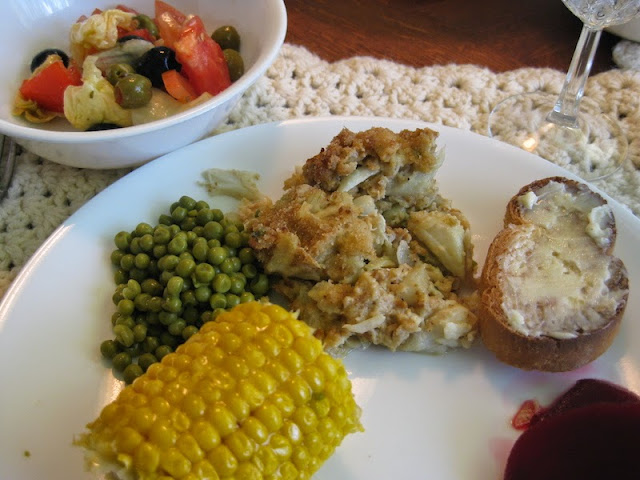Traditional omelets are made with eggs - of course! - but often include cheese, meat and vegetables in various proportions. Make your omelet suit your tastebuds and use whatever you have leftover in your refrigerator.
When time is short and the fridge is full of leftovers no one really wants to see again, an omelet (perhaps with a green salad on the side?) is just the perfect meal. Anything and everything is fair game for an omelet. I have been known to add leftover chicken, pork, beef, mashed potatoes, baked potatoes, rice and every kind of cooked vegetable known to man. Add a little cheese and you have a meal worth eating.
First, check out the potential additions. What’s in your fridge? A chicken leg, fajita meat, one last pork chop? Any fresh herbs in the garden? Bits and ends from the cheese drawer? If you only have cheese, don’t despair. Cheese omelet is a classic.
Approximate ingredients to feed two - mix and match as your taste and leftovers dictate
Olive oil or butter for greasing the pan
1 cooked potato or other starch - My grandmother loved to use leftover rice!
Healthy handful cooked vegetables (about 1/2 cup or 75g)
Healthy handful cooked chicken, beef, pork roast, etc. (about 1/2 cup or 75g)
2-3 large eggs
2 tablespoons milk
Small handful fresh herbs of your choice
Fine sea salt
Black pepper
1 3/4 oz or 50g cheese or more! (about 1/3 cup, grated)
For instance, yesterday, I had a small baked potato that needed eating, one breast leftover from a roasted chicken and some Brussels sprouts from an entirely different meal.
Method
I chopped the potato, chicken and sprouts up and warmed them in my non-stick skillet with a little butter. You can also substitute olive oil.
Meanwhile, I whisked the eggs with the milk in a small bowl and grated some cheddar cheese.
For an omelet like this, any cheese you have will do. I have used feta and chèvre and various blues and Brie and Camembert and Tomme and many others. If your cheese won’t grate, just slice it up or crumble it instead.
I also headed out to my little backyard herb garden and harvested a bunch of green onion tops. I chopped the onion tops and added them to the eggs.
Once your vegetables or meat or whatever are warmed through, add the eggs, sprinkle with sea salt and black pepper. Turn the fire down to its lowest setting and cover the pan.
With the heat on low it may take a few minutes for the omelet to cook through. If you are feeling brave, you can try to flip it halfway through but, with the lid on and a low enough heat, this won’t be necessary.
Once the eggs are just about cooked, top with the grated or sliced cheese, turn the stove off, and put the lid back on till it melts. This happens pretty quickly.
Serve with a lightly dressed green salad. And, a glass of wine if it's dinnertime.
Enjoy!
* They clean your fridge.





















































